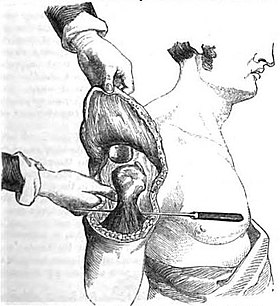Uses and Applications of Flap Surgery
- Flap surgery is essential in plastic and reconstructive surgery.
- Flaps are tissues that can be moved to another site with their own blood supply.
- Flaps are used for large, complex, or tissue-requiring wound closure.
- Common uses of flaps include abdominal wall reconstruction, breast reconstruction, hand reconstruction, mandible reconstruction, and rhinoplasty.
- Flaps are also used for scar revision and skin cancer treatment.
- Flap surgery is commonly used for reconstruction after trauma or cancer resection.
- It can be used to restore function and aesthetics.
- Flap surgery is employed in various specialties, including plastic surgery and head and neck surgery.
- Flap surgery can help in the reconstruction of facial features.
- It is also used in the reconstruction of other body parts, such as the breast.
Anatomy and Angiosome
- Understanding flap anatomy is crucial for successful flap surgery.
- Flaps can contain different layers of tissue, from skin to bone.
- Skin plays a vital role in thermoregulation, immune function, and flap survival.
- The skin has three main layers: epidermis, dermis, and subcutaneous tissue.
- Blood supply to the skin is provided by deep and shallow networks of blood vessels.
- Angiosome is a concept coined by Ian Taylor in 1987.
- An angiosome is a three-dimensional region of tissue supplied by a single artery.
- Adjacent angiosomes are connected by narrower choke vessels.
- Knowledge of angiosomes helps in planning the location, size, and shape of a flap.
- Angiosomes play a significant role in flap surgery.
Classification of Flaps
- Flaps can be classified based on their mechanism of movement, tissue type, or blood supply.
- The reconstructive ladder suggests choosing the least complex flap type for desired results.
- Mechanism of movement classification includes local, regional, and distant flaps.
- Tissue type classification includes cutaneous, fasciocutaneous, musculocutaneous, muscle, bone, omental, and intestinal flaps.
- Vascular supply classification includes axial vs. random and pedicled vs. free flaps.
Contraindications and Risks/Complications
- Flap surgery is contraindicated for individuals who are unstable for surgery.
- Stability for surgery is a crucial factor in determining eligibility for flap surgery.
- Other contraindications may exist based on individual health conditions.
- Proper assessment and evaluation are necessary to determine suitability for flap surgery.
- Patient safety and well-being are paramount in deciding whether to proceed with flap surgery.
- Risks and complications of flap surgery include infection, wound breakdown, fluid accumulation, bleeding, and scarring.
History, Recovery, and Advancements
- Flap surgery has been documented since ancient times.
- The first known description of flap surgery in Europe was in De Curtorum Chirurgia per Insitionem.
- The technique of flap surgery has evolved over time.
- Flap surgery has been used for various purposes, including reconstruction of head and neck.
- The use of flaps in plastic surgery gained popularity during war injuries.
- Flap death is the biggest risk in recovery.
- The flap failure rate in free flaps is less than 5%.
- Venous insufficiency is the most common cause of flap failure.
- Flap healing follows the stages of normal wound healing.
- Incision takes over 3 months to reach 80% tensile strength.
- Advances in imaging technology have improved flap surgery planning.
- New techniques, such as perforator flaps, have expanded the options for flap surgery.
- The use of tissue engineering and regenerative medicine may revolutionize flap surgery.
- Minimally invasive approaches are being explored in flap surgery.
- Ongoing research aims to enhance the outcomes and safety of flap surgery.
Flap surgery is a technique in plastic and reconstructive surgery where any type of tissue is lifted from a donor site and moved to a recipient site with an intact blood supply. This is distinct from a graft, which does not have an intact blood supply and therefore relies on growth of new blood vessels. This is done to fill a defect such as a wound resulting from injury or surgery when the remaining tissue is unable to support a graft, or to rebuild more complex anatomic structures such as breast or jaw.

